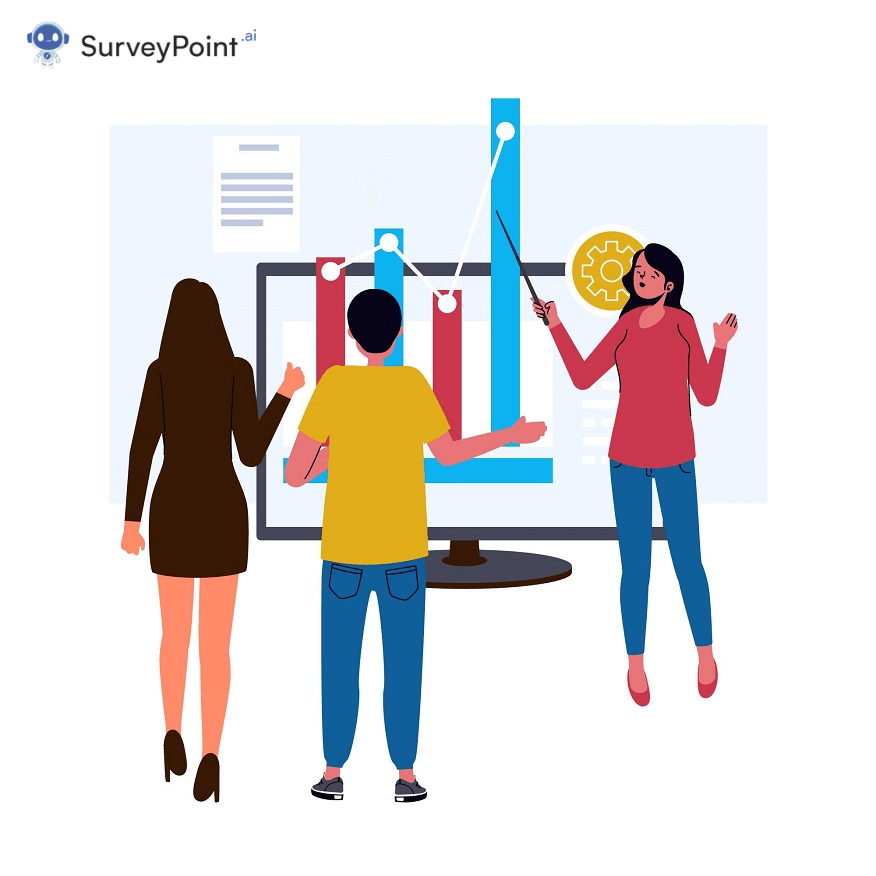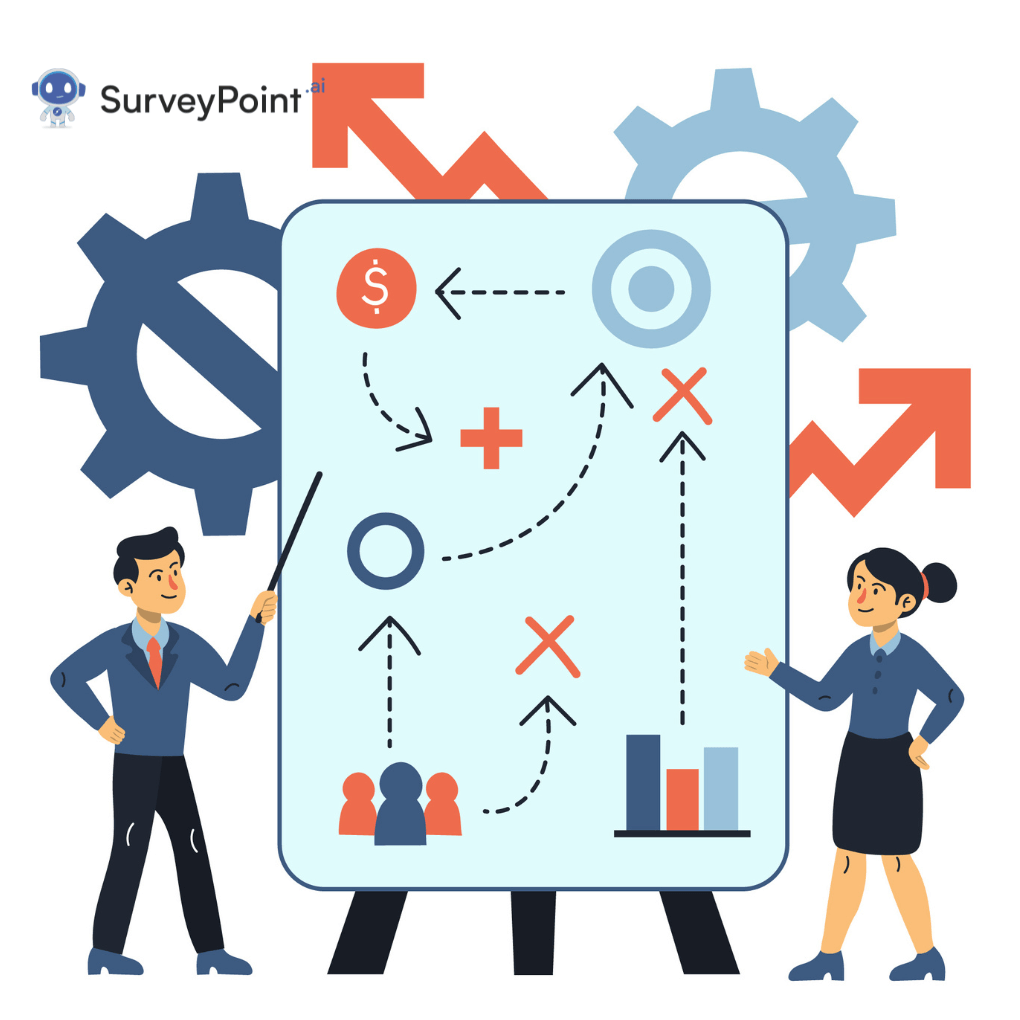
Customer Lifetime Value (CLV) is one of the primary stats that can help you understand the customer experience in your organization. It simply measures how valuable your customers are to your company. In addition to evaluating the buying or selling process, it also examines the overall experience, from discovering the brand to taking action.
Because retaining existing customers is actually easier than onboarding, CLV can be an essential metric to drive growth. Before we get into CLV, let’s be clear about how this differs from Net Promoter Score (NPS) and CSAT. NPS calculates customer loyalty, CSAT calculates customer satisfaction, and CLV determines the worth of that customer.
In this blog, we’ll discover what CLV is and why it is vital to your business.
Importance Of Customer Lifetime Value (CLV) For Your Business
Let’s get this straight. You don’t need to surround yourself with complex calculations to determine CLV. Although there is a formula to it, being mindful of the value of your customer can help too.
The key drivers of CLV are measuring feedback and understanding customer experience. CLV can be a great tool, especially if you have multi-year customer relationships. Like, a paid TV subscription. This can also identify early signs of attrition.
ALSO READ: Are You Confident About Your Survey Data's Margin Of Error?
How Much Do Customers Actually Cost You?
CLV is best utilized by combining it with Customer Acquisition Cost (CAC). CAC is the money you put into onboarding new customers. This includes the cost of marketing and sales. In short, CLV will only make sense if you consider CAC.
Let’s take an example. If the CLV of a coffee shop customer is around $1,000 and CAC is more than your CLV, that coffee shop is most likely in losses.
Apart from this, there’s yet another equation here: Cost to Serve. The cost to Serve is the cost of doing business with your customer. This would include building the product, offering a service and logistics. Breaking such costs per customer can help you understand your expenses at a basic level.
You can further dig into CLV to explore where you are putting your finances. You can cut down your CLV on a few customers that cost less than others. If the cost of serving your customer is more, you might find yourself struggling with losses despite having a good CLV.
NOTE
The Cost to Serve can vary from customer to customer. It can also depend upon factors like customer lifetime, acquisition cost, etc.
For instance, if you onboard a new customer, you are more likely to charge them higher. However, when a year passes, you offer them loyalty discounts to retain them.
In short, the Cost to Serve can increase with time. And, if your renewal rates take a big dip, your average Cost to Serve might increase, causing a dent in your profits.
Considering all these costs is the only way you can find out the worth of your customer. Furthermore, this will allow you to calculate how much your relationship contributes to your company’s bottom line.
RELATED: Sampling Bias: A Threat to Accurate Analysis
How To Measure Customer Lifetime Value (CLV)?
Calculating CLV for a small business isn’t that hard. For instance, if a company bought a Christmas tree from a grower for ten years at $40, your CLV will be $400. Pretty straightforward, right?
However, as your company grows, you must consider several factors, additional costs and processes to get to your final CLV.
This is why most companies don’t even try to measure their CLV. Teams might be segregated, marketing may be untargeted, and systems may be insufficient if this occurs. However, integrating data is the key to calculating CLV. You must have all the data in place so it doesn’t feel like a headache.
Here’s how to calculate CLV:
- Identify customer touchpoints where your customer might create value.
- Make a customer journey by integrating records.
- Calculate revenue at each touchpoint.
- Add this individual revenue together over the customer’s lifetime.
Now, let’s get into the formula. Generally, CLV is calculated using two values: historic and predictive CLV.
Historic customer lifetime value analyzes past data to make a judgment on the worth of your customer. Predictive CLV, on the other hand, predicts the CLV for the future. The formula for both differs. Here’s a brief look into both of them:
Historic CLV
Customer Lifetime Value (Historic)= (Transaction 1+ Transaction 2 + Transaction 3….+ Transaction N) X AGM
A customer’s CLV can be calculated based on the sum of all past transactions made with that customer. Only if you have historical records can you use the above formula.
In the above formula,
N = last transaction made by the customer
AGM = Average Gross Margin
This method considers the cost of returns, customer service, acquisition, marketing, etc., to determine CLV. When you calculate the historic CLV for every customer, it becomes quite complex.
Predictive CLV
Unlike historic CLV, predictive CLV is a little more accurate as it measures the future CLV through an algorithm. This method is purely based on assumptions and predictions.
However, it can be a bit more complicated, especially considering external factors like inflation, discounts and other fluctuations.
Here’s a formula to calculate predictive CLV:
CLV= ((Tx AOV) AGM) ALT
Here,
T = Average transactions every month
AOV = Average value of the order
ALT = Average customer lifespan
AGM = Average gross margin
ALSO READ: Getting Started with Exploratory Data Analysis in Data Science?
Improving CLV: 7 Tips To Follow
While CLV might sound complicated, it is about maintaining fruitful customer relationships. So, to boost your CLV naturally, focus on maintaining relationships with them.
Here are the seven tips that can help you:
Work On Customer Experience
Stating again, the best way to improve CLV is by investing and working on customer experience. Note that customer experience includes everything, from store visits to contacting queries and product use.
Improving customer experience is indeed something that will involve manipulation of all business operations; it can actually be worth your while.
Ensure A Smooth Onboarding
Onboarding is the starting point of your customer experience. And, if you make this seamless and straightforward, you might win your customers for a long time.
However, many companies think their work ends when a customer purchases. Simply put, make your onboarding process easy and sensitive to customers’ needs.
Kick-Start A Loyalty Program
A loyalty program can be a silver bullet for retention. Loyalty programs offer special discounts to customers who have been in business for a much longer time.
Recognize The Prime
One way to boost customer experience is by recognizing and rewarding the best customers. These customers can be those with hefty transactions or frequent buyers.
This can help nurture better relationships with your customers and keep them loyal to your brand.
Offer Support
Through stunning customer support service, you can keep your customers happy. Conduct small research and determine how you can reach your customers personally.
Leverage Social Media
Socials are perhaps the best way to connect with your customers personally. Not only will this help you keep tabs on the ongoing trends, but your social media strategy might also attract new customers.
Closed-Loop Feedback
Closed-loop feedback can be a great way to bid adieu to unhappy customers and turn dissatisfied customers into loyal ones. The customer service model requires you to track back their complaints and solve whatever issue they are experiencing.
The Takeaway
Customer Lifetime Value (CLV) can be a great way to improve relationships with your customers and increase the level of loyalty you share with them. Although this process may seem complicated, it is perhaps the most effective way to maintain a close relationship with your customers.
Learn to work smarter, not harder!
Use our intuitive survey dashboard panel to identify respondents in even the most niche markets.
Free Trial • No Payment Details Required • Cancel Anytime




